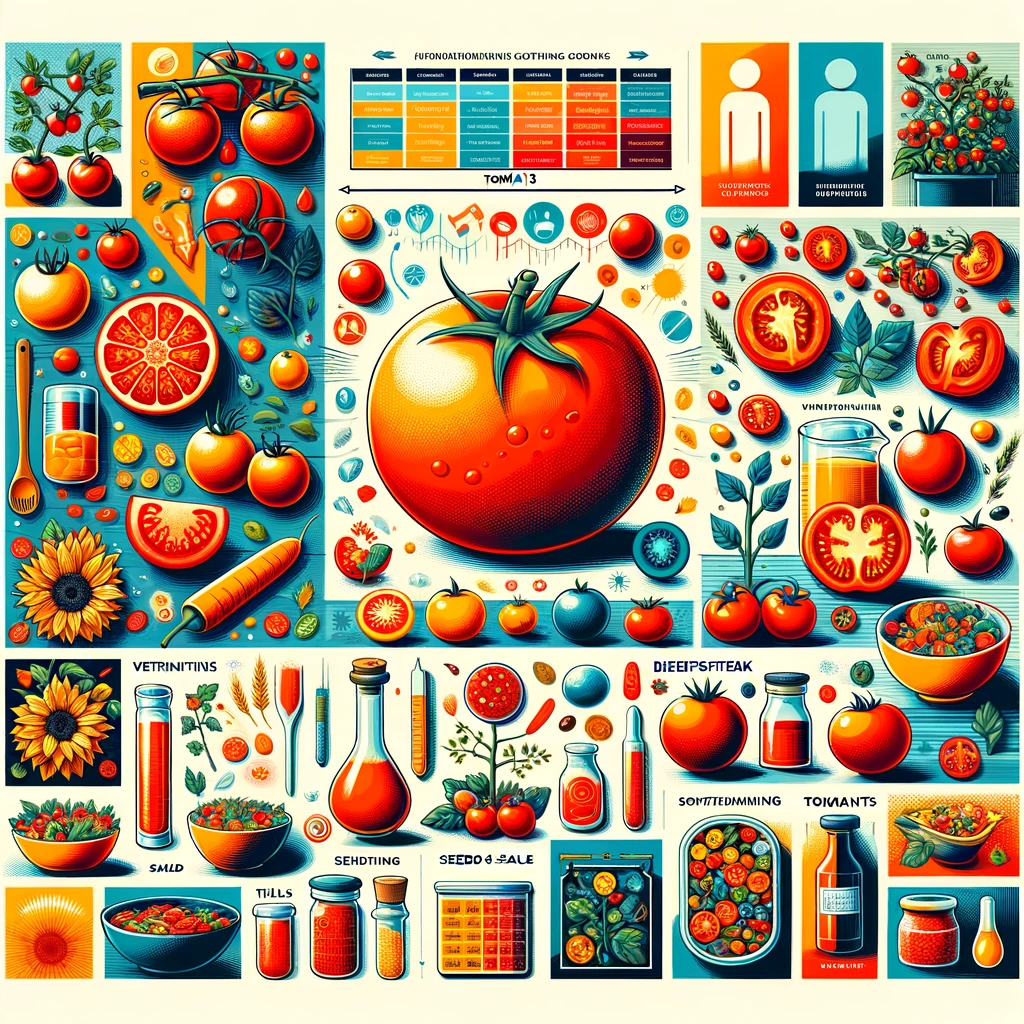Introduction
Tomatoes are a versatile and beloved addition to many dishes, from salads to sauces, and there’s nothing quite like the satisfaction of plucking a juicy, ripe tomato straight from your own backyard garden. Growing tomatoes in your backyard can be a rewarding experience, and with the right tips and ingredients, you can ensure a bountiful harvest. In this comprehensive guide, we will take you through everything you need to know to grow delicious tomatoes in your own outdoor space.
Choosing the Right Tomato Varieties
When it comes to growing tomatoes, the first step is selecting the right tomato varieties for your backyard garden. Different types of tomatoes thrive in various climates and conditions, so it’s essential to choose varieties that are well-suited to your region. Here are some popular tomato varieties to consider:
1. Determinate vs. Indeterminate Varieties
- Determinate varieties are compact and bushy, making them ideal for small spaces and container gardening.
- Indeterminate varieties are vining and will continue to produce fruit throughout the growing season.
2. Heirloom vs. Hybrid Tomatoes
- Heirloom tomatoes are known for their unique flavors and characteristics, but they can be more challenging to grow.
- Hybrid tomatoes are bred for disease resistance and high yields.
3. Cherry Tomatoes vs. Beefsteak Tomatoes
- Cherry tomatoes are small and sweet, perfect for snacking and salads.
- Beefsteak tomatoes are large and meaty, great for sandwiches and canning.
Selecting the Right Location
Choosing the right location for your tomato plants is crucial for their success. Tomatoes require plenty of sunlight and well-draining soil. Here’s what you need to consider:
1. Sunlight
Tomatoes need at least 6-8 hours of direct sunlight per day. Ensure that your chosen location receives adequate sunlight throughout the growing season.
2. Soil Preparation
Prepare the soil by adding organic matter like compost or well-rotted manure. This will improve soil fertility and drainage, creating a healthier environment for your tomatoes.
3. Proper Spacing
Space your tomato plants at least 2-3 feet apart to allow for good air circulation, which helps prevent diseases.
Planting Tomatoes
Now that you’ve chosen the right tomato varieties and location, it’s time to plant your tomatoes.
1. Planting Time
Wait until the danger of frost has passed before planting your tomatoes. In most regions, this is usually in the spring.
2. Planting Depth
Bury your tomato plants deep in the soil, leaving only the top few sets of leaves above the surface. This encourages strong root development.
3. Support Structures
Use stakes or tomato cages to support your tomato plants as they grow. This will help prevent the vines from breaking under the weight of the fruit.
Watering and Maintenance
Proper watering and maintenance are essential to ensure healthy tomato plants and a successful harvest.
1. Watering
- Water consistently to keep the soil evenly moist but not waterlogged.
- Avoid overhead watering, as it can lead to fungal diseases. Instead, water at the base of the plant.
2. Fertilizing
- Use a balanced, slow-release fertilizer to provide essential nutrients to your tomato plants.
- Avoid excessive nitrogen, as it can lead to lush foliage but fewer fruits.
3. Pruning and Trimming
- Remove any suckers that develop in the crotches of the main stems to encourage better airflow and fruit production.
- Trim the lower leaves to prevent soil-borne diseases from splashing onto the plants.
Pest and Disease Management
Tomatoes can be susceptible to pests and diseases, but with proper care, you can minimize these issues.
1. Common Pests
- Keep an eye out for aphids, hornworms, and whiteflies.
- Consider using organic pesticides if necessary.
2. Disease Prevention
- Rotate your tomato crops each year to reduce the risk of soil-borne diseases.
- Apply mulch to prevent soil splashing onto the plants.
Harvesting and Enjoying Your Tomatoes
The moment you’ve been waiting for has arrived – it’s time to harvest your tomatoes!
1. Harvesting Time
- Pick your tomatoes when they are fully ripe. They should be firm but give slightly when gently squeezed.
- Harvest regularly to encourage more fruit production.
2. Enjoying Your Tomatoes
- Use your fresh tomatoes in salads, sandwiches, sauces, and more.
- Consider preserving extras by canning, freezing, or making tomato sauce for the winter months.
Conclusion
Growing tomatoes in your backyard can be a fulfilling and delicious endeavor. By selecting the right varieties, providing proper care, and managing pests and diseases, you can enjoy a bountiful harvest of homegrown tomatoes. Whether you’re a seasoned gardener or a beginner, these tips and ingredients will help you cultivate juicy, flavorful tomatoes that will elevate your culinary creations and make your backyard garden a source of pride and satisfaction. Happy tomato growing!
